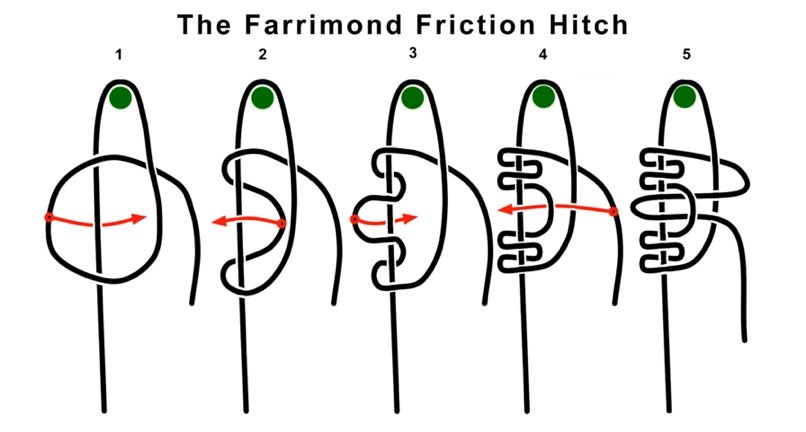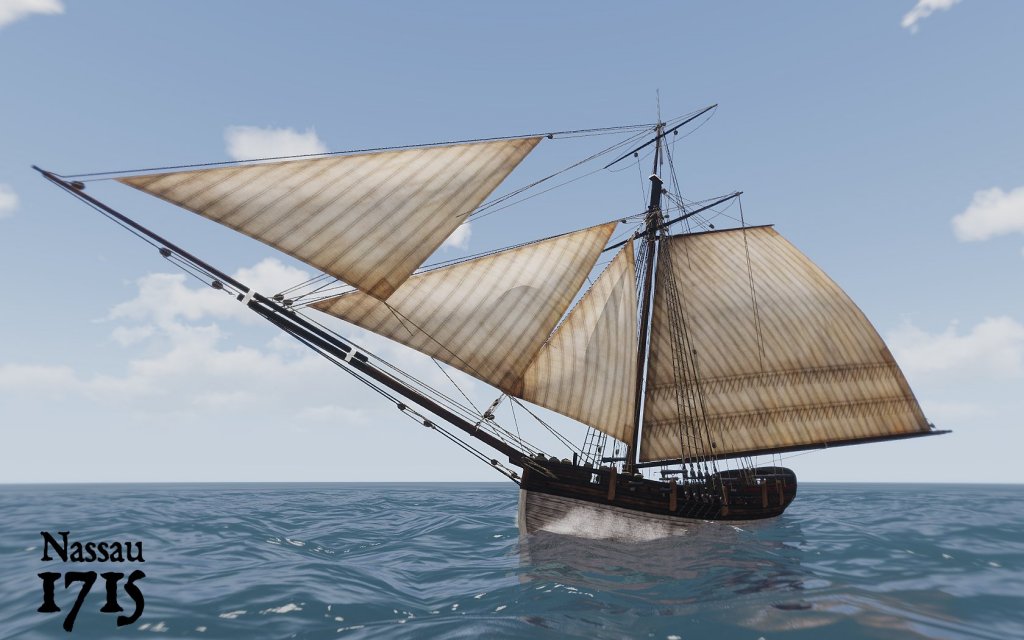-
Posts
75 -
Joined
-
Last visited
Content Type
Profiles
Forums
Gallery
Events
Posts posted by timboat
-
-
19 hours ago, mtaylor said:
As I recall, rollers weren't always hard mounted but tied off in place as needed.
3 hours ago, trippwj said:Steel, David. Seamanship, Both in Theory and Practice. Printed and published for, and at, Steel’s Navigation-Warehouse, Tower-Hill, 1795. docs.lib.noaa.gov/rescue/rarebooks_1600-1800/VK541S81795.PDF.See description for ships with no jeer capstan on page 156.
I'm inclined to believe, despite Arming and Fitting of English Ship of War saying the messenger didn't come into use until around 1730 and the AOS showing no rollers, that they did use rollers. Maybe it just wasn't a standardized thing until 1730. I'm guessing they looked like this http://www.shipmodell.com/img_tall/_HMS_PANDORA_118.jpg I don't know who made this model but wow.
Thanks for the help guys, I appreciate it.
-
2 hours ago, trippwj said:
I don't think that an 8 to 13 inch circumference cable would be wrapped around the capstan. On the largest ships the line comes in through the manger and the viol is rigged on the lower deck, not the weather deck. On a 20 gun sloop of war, it is likely some other method was used. There may be something in Lever about weighing the anchor on a sloop.
No, I agree. I think it would be more practical to use a messenger. The AOS Blandford book mentions all three methods, but dismisses the vyol way because the Blandford didn't have a jeer capstan and said more than likely a messenger was used. He did mention the anchor cable may have been small enough to go around the capstan but simply that's just not practical trying to man handle the entire cable around the capstan. Look at the picture I posted, there's no way to put the anchor cable over the capstan because it goes up to the next deck.
But a lot of research says the messenger wasn't used until around 1730, and along with the fact the book shows no rollers leads me to believe the Blandford didn't have any rollers systems to prevent the messenger from damaging the pumps.
-
On 10/5/2019 at 1:08 PM, davyboy said:
Timboat,Lees states in his Masting and Rigging book that viols were not used on ships below 36 guns. Blandford was a 20 gun ship. It's probable/possible that the Anchor Cable was led straight to the Capstan as their heaviest anchor was only 23 cwt according to Steel.
Dave

Well that raises new questions and a lot of complications. The Blandford's capstan goes through the deck, so there's no way of throwing the cable over the capstan when you need to use it. So they would either wrap the cable around the capstan just before dropping anchor and leave it there or pull the entire cable out of the hold and wrapped it around the capstan when preparing to weigh anchor, requiring time and man power.
That still leave the question of warping the cable around the stanchions, chain pump housing and elm tree pumps.
-
Hey guys, I have a question. I'm making a 3d model of a ship based on the HMS Blandford 1719 and I'm trying to figure out how they rigged a messenger or viol when weighing anchor. Based on my research there was two ways an anchor was raised, 1: using a viol lashed to the anchor cable, then ran through the viol block strapped to the main mast, then taken to the jeer capstan and 2: after around 1730 using a messenger cable lashed to the anchor cable, led through a series of rollers, taken to the main capstan and back. I completely understand this.
The ship I'm making is from 1719 with no jeer capstan, so they had to have used the main capstan as if it was a messenger cable, however the blueprints I have show no rollers attached to the stanchions. I'm guessing the system of rollers wasn't developed until after 1730. That means if the main capstan was used with a messenger cable the cable when taut would rub up against the stanchion, elm tree pumps and chain pump housing, which I'm sure this would damage those parts. So I'm thinking they warped the messenger cable to the side with a viol block or a snatch block.
My question is where would they attach a viol or snatch block to the side to warp the messenger cable? I'm thinking some of the bolts for the channel's chain plates had on rings on the inside for this. I'm guessing the side of the hull was strong enough to take part of the stress of the anchor cable.
By the way does anyone have any good pictures of a viol block?
- jchbeiner, GrandpaPhil and mtaylor
-
 3
3
-
It does help. Thank you! For some background I'm making the 3d model for a video game mod based on the Golden Age of Piracy, circa 1715. The drawing of the Antelope does help. I've never heard the cabin on the quarter deck being referred to as the round house. I always thought it was the semi circle heads at the head of the ship. From my understanding the round house's function depended on whether or not a ship had a whip staff or a wheel. Would it be safe to assume if the ship I make has a wheel instead of the whip staff the captain would be quartered up there, and therefor the cabin would be longer than it previously was, such as the cabin depicted here http://nauticalhistory.weebly.com/the-70-gun-third-rate-prince-frederick-of-1714.html ?
As for parts like capstans, channels, bitts .etc would it be safe to use a 70 gun as reference from this time period? It doesn't have to be 100% accurate, just authentic, because this model would fill the roles of many different ships of its size.
-
Thanks for the information guys but it kind of miss what I was looking for. I have a bunch of references of certain bits here and there, of this and that, but nothing that's as complete and descriptive of a 4th rate from circa 1715 that I need to make a 3d model of one with a full interior. I already have line drawings but they're lacking specific details, such as bitts, capstans, gun ports, channels .etc. I can't find detail pictures of many 4th rate model from the early 18th century, but I can find a lot of pictures of 3rd rates models from the same period. I have to work with what I got, so I can take my building cues for specific parts from a 3rd rate? Thanks.
-
Hey everyone, so I'm making a 3d model of an early 18th century 50 gun English Man-O-War, based on the HMS Swallow, but I pretty much have zero references for this ship. I have however found a lot of stuff for a 70 gun ship. So my question is, can I take a lot of my building cues from a 70 gun ship, such as this one http://nauticalhistory.weebly.com/the-70-gun-third-rate-prince-frederick-of-1714.html? I have also notice some ships have a short cabin on the quarter deck while this one has a longer one. Are short cabins on 50 gunners more common than long cabins? Can I get away with making a longer cabin?
Thank guys!
-
-
Does anybody have any information about spyglasses circa 1715...or if they were even common on sailing ships? Thanks.
-
41 minutes ago, popeye2sea said:
Blackbeard, Edward Teach flew a black flag with a skeleton holding a a glass in one hand and a spear in the other which was aimed at a bleeding red heart.
Small note this is the flag modern day folklore attributes to Blackbeard, but that actually wasn't his flag.
In Charles Johnson's A General History of the Pirate, published 1724, there's an engraving of Blackbeard with his ship in the background flying a black flag with a skull
.jpg.d6d55cf35247690a2746b224684e7391.jpg)
- mtaylor and thibaultron
-
 2
2
-
It wasn't usual for pirates to add carvings to a ship, much less skulls (skulls weren't a common art form on ships). Pirates often changed out their ships within a few months and didn't have time, skill or the desire to make wood carvings. If I remember correctly Benjamin Hornigold had to sell of his favorite ship the Besheba because it was being ate up by worms. Instead pirates would devote most of their effort for ship maintenance and upgrades on other tasks, such as cleaning the bottoms and adding more cannon or swivel guns.
As far as flags goes the skull and crossbones didn't come around until the early 18th century. During the age of the buccaneers they used a black flag. Also some pirates didn't fly the flags we think they flew. For example, Blackbeard never flew the popular flag that was attributed to him. Instead he just had a black flag with a skull on it.
Also keeping a dead, rotting corpse on a ship is a precarious thing. Not saying it didn't happen, but it surely didn't happen often at all. I heard somewhere pirates wore jewelry to finance their own burial on land which isn't true since they wouldn't have kept dead bodies aboard.
-
Please excuse me while I remove my foot from my mouth. Probably not the best way to describe how confusing naval jargon sounds. I think you're referring to the deck stoppers that held the anchor cable while riding. I meant the piece of rope or device that held the anchor to the cat head so the cat block could be removed and then when ready a rope was pulled to release the knot or the device, letting go of the anchor to fall into the ocean.
-
Jud, normal people would have no clue what you just said and would simply assume you're having a stroke.
I'm still quite puzzled by the cat stopper (that's what they called the piece of rope that dropped the anchor, right?). I did some research have found how to tie a Farrimon friction hitch and it would seem possible that knot with a good, strong rope could hold up a 1 1/2 ton anchor on a cat head, but apparently this knot was invented in 2008. I know large ships in the 1800s had a metal device for releasing the anchor, but I seriously doubt they had something like that for sloops in 1715.

-
Someone sent me a small excerpt from one of Chapelle's books "The absence of a windlass, or capstan, in many of the American schooners of this period requires explanation. The relatively large crews, particularly in privateers or letters-of-marque, could manhandle the cable and anchors by means of tackles stopped to the cable. The tackles were double or treble purchaces laid out on deck on each side, one block secured aft and the other to the cable near the hawse. The tackes were worked alternately, and the running block was secured by strops (short pieces of rope) passed around the hook or eye of the block and then around the cable. The strop was passed so that it jambed on the cable and could either be quickley thrown of or secured. "
So it seems it was possible to forego the use of a windlass or capstan for light anchors.
But here's another question. How was the cat stopper rigged on a sloop with a anchor typical of a ship this size? I'm assuming it was a simple slip knot passed around the cat head and the anchor ring with the running end leading aft clear of the laidout anchor cable. I would image a couple strong sailors would be able to pull it to drop the anchor.
-
-
-
I'm making a 3d model of a generic sloop circa 1715. I thought that they were omitted from the plans for simplicity sake, but then why does everyone make ship models without those parts?
To be honest, I don't think they had riding bitts for some sloops. Instead I think they rigged stoppers from the ring bolts on the deck and that was sufficient to hold the cable while riding.

-
I mean a true sloop, not a brig, snow, brigantine, cutter.
3 hours ago, JerseyCity Frankie said:Why, I wonder, do you feel there isn’t anchor handling gear aboard?
Most models I see of a sloop don't include a windlass, a capstan or riding bitts.
https://modelshipworld.com/uploads/gallery/album_266/gallery_2684_266_123723.jpg
http://modelshipbuilder.com/e107_files/public/1417092562_4_FT0_mediator-final1_.jpg
It's not easy to just attribute the issue to an error in the drawings and craftsmanship of people's model. They spent a lot of time researching their models to get everything right, so I'm compelled to believe some sloops didn't have windlasses, capstans or ridding bitts.
4 hours ago, trippwj said:If, on the other hand, there is no capstan or windlass, I suspect that the anchor is raised in the same way as cargo - using the yards as the attach point for block and tackle arrangements.
I can see that to fish that anchor shank, but I don't see how it could raise the anchor from the ocean floor. You would have to constantly bend two tackles to the cable with nippers, one after another as the anchor is raised, and remove them at some point. And if the tackle is going to the yards how would they remove the tackle from the cable? They would have to wait until they can detach it at the yard, and then let the cable drop or lower it. Wouldn't it have been easier to attach the other end of the tackle to a ring bolt on the deck?
-
I know how they raised and lower the anchor on a man-o-war or frigate, but how did they do it on a sloop...that didn't have a capstan, windlass or riding bitts? How where they able to haul up the anchor? Did they bent two tackles on the cable and secured the other end of the tackles to a ring bolt somewhere and hauled it up that way, switching between the two tackles?
If they didn't have a fish davit how did the fish the shank up? Did they run a tackle from the crossjack to the shank with the running end going to the deck?
I'm also guessing when riding at anchor they secured the cable to the deck with stoppers from the deck ring bolts.
-
Anybody have an idea what kind of table or chairs were used on an early 18th century English Man-O-War? Specifically the kind of table or chairs in the ward room or great cabin? Thanks!
-
-
Ok, so would "Take in T'gallants'l" be appropriate to clew up the T'gallant for battle sails?
-
20 hours ago, popeye2sea said:
The problem your going to run into is that the actual commands were rather general and intended to control the timing of the sequence to accomplish something. The subordinate commands for the individual lines and movements were not necessary because the crew was trained and proficient in what needed to be done. So commands like "off tacks and sheets" or "let go and haul" do not contain enough specific information about individual lines. The lieutenants and bos'n would make sure the proper lines would be hauled or eased as needed.
So commands where not generally used for individual lines. What would you call it though if you hauled in clew lines and bunts for an individual sail? I know it's not "shorten sail" as I would imagine that implies using the sail gaskets to shorten the sails.
-
I'm making a 3d model of an 18th century 6th rate frigate for a computer game. In the game the player has a rather primitive ability to set sail by running up to where the different lines are belayed and selecting a command but I don't really know what to label those commands. For example, what would be an appropriate command to turn the fore course yard? I'm thinking it's something like "Haul in Fore Course Starboard Brace" to turn the fore course yard to starboard. Or to clew up the fore course sail would be "Let Fore Course Tacks and Sheet fly and Haul in Clew Garnets". I want it to sound authentic so simply "furl fore course sail"/"unfurl fore course sail" won't do.
Any suggestions, ideas, comments or thoughts?




HMS Terror Video
in Nautical/Naval History
Posted
I wonder if they can raise her like the Wasa. That would be incredible. Excavate and extract as much stuff as possible probably over a decade and then bring her back up and put her in a museum.